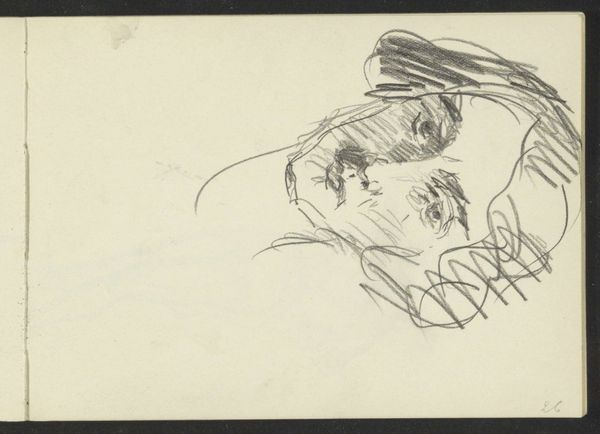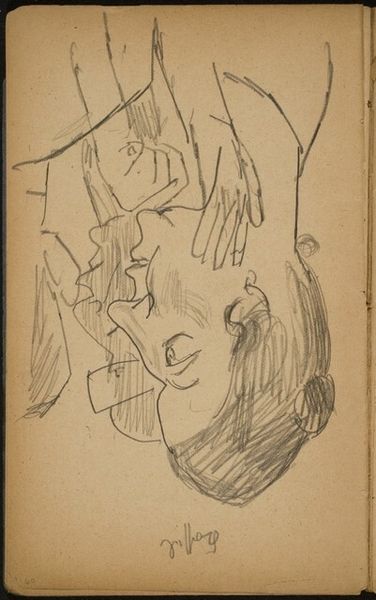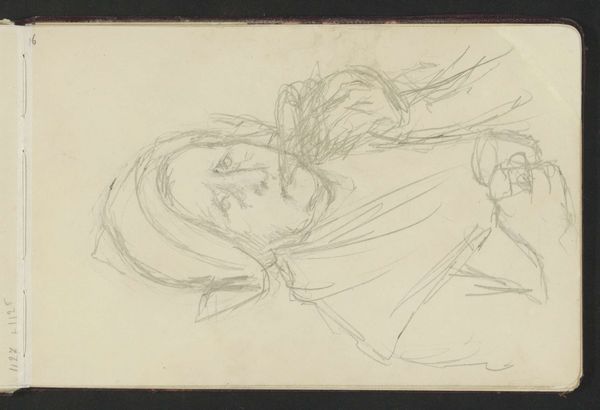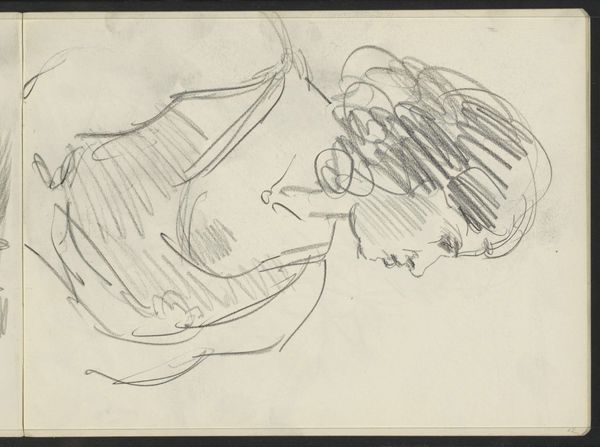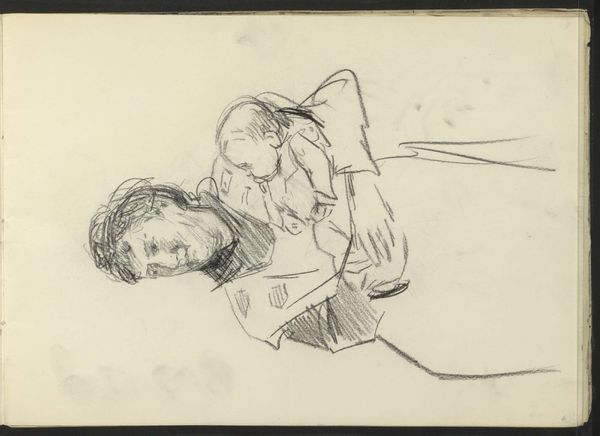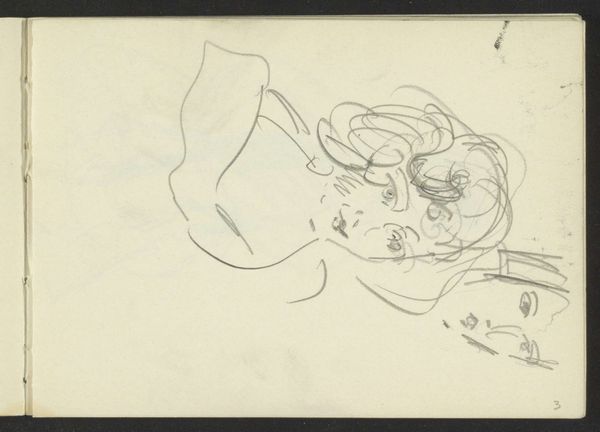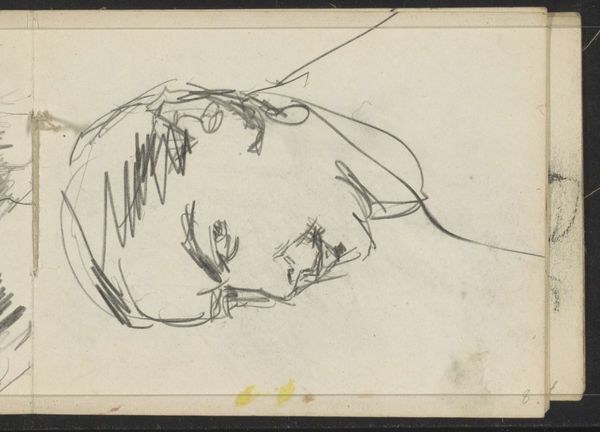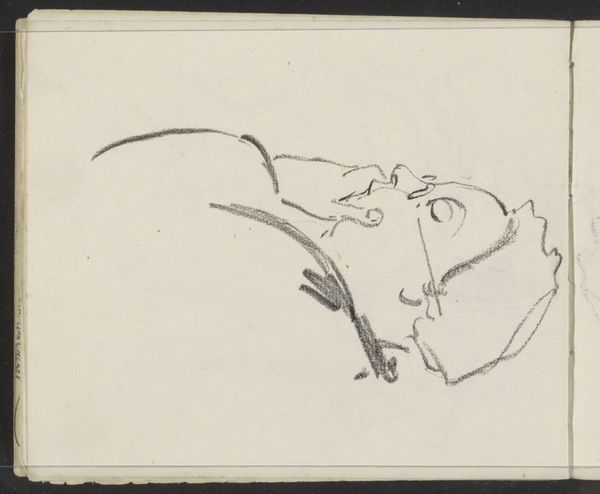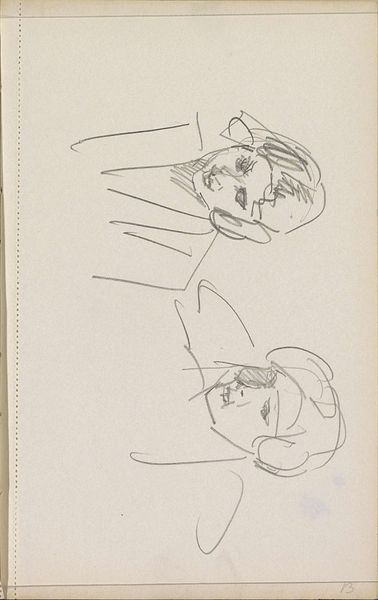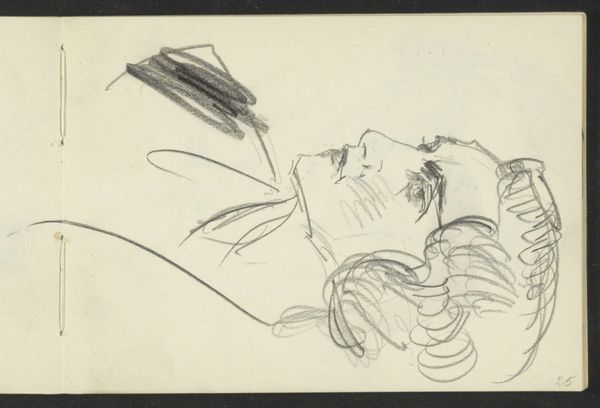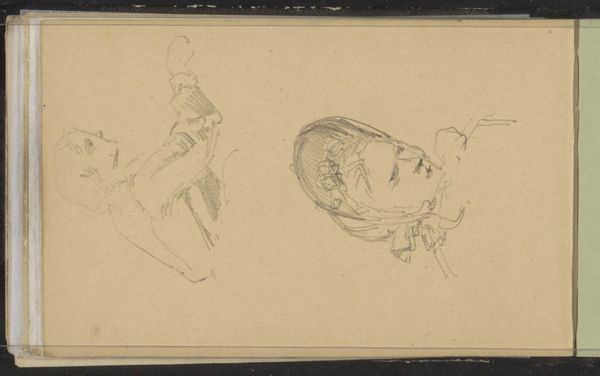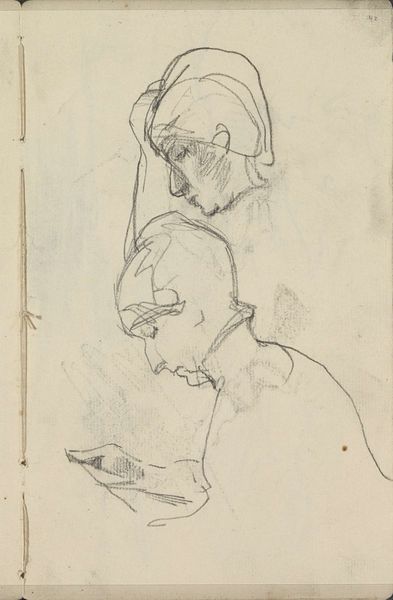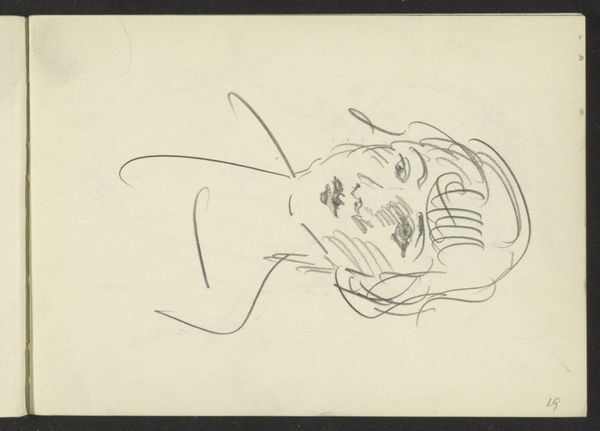
Copyright: Rijks Museum: Open Domain
Editor: Here we have "Man naast een vrouw" by Isaac Israels, made sometime between 1875 and 1934. It looks like it was done with pencil or pen. There's something very intimate about this quick sketch, like we're catching a private moment. What's your take on this piece? Curator: This sketch offers a fascinating glimpse into the artistic process within its socio-political environment. Consider Israels' position: a well-connected artist capturing intimate scenes. This casual sketch aesthetic became popular, rejecting academic painting and aligning itself with a burgeoning sense of modern life in major cities. Why do you think this directness appealed to audiences? Editor: Maybe it felt more real, more relatable than those grand, staged portraits? This looks like something anyone could quickly jot down. Curator: Precisely. This aesthetic resonated with a growing middle class eager to engage with art that reflected their own experiences. However, let's not forget that "relatability" can also be a class marker. Israels could capture these "candid" moments *because* of his social standing. Consider who is being depicted, their social status, and Israels' relationship to them. How does this dynamic influence the narrative we read into the drawing? Editor: So, it's not just about the art itself, but about who had the power to represent whom. This simple sketch now seems much more complex! I'll definitely think about that context next time I see an Impressionist work. Curator: Exactly! Understanding these power dynamics helps us unpack not just the image, but its place within the broader social landscape of its time, giving us a much richer understanding of both the art and its historical moment.
Comments
No comments
Be the first to comment and join the conversation on the ultimate creative platform.
